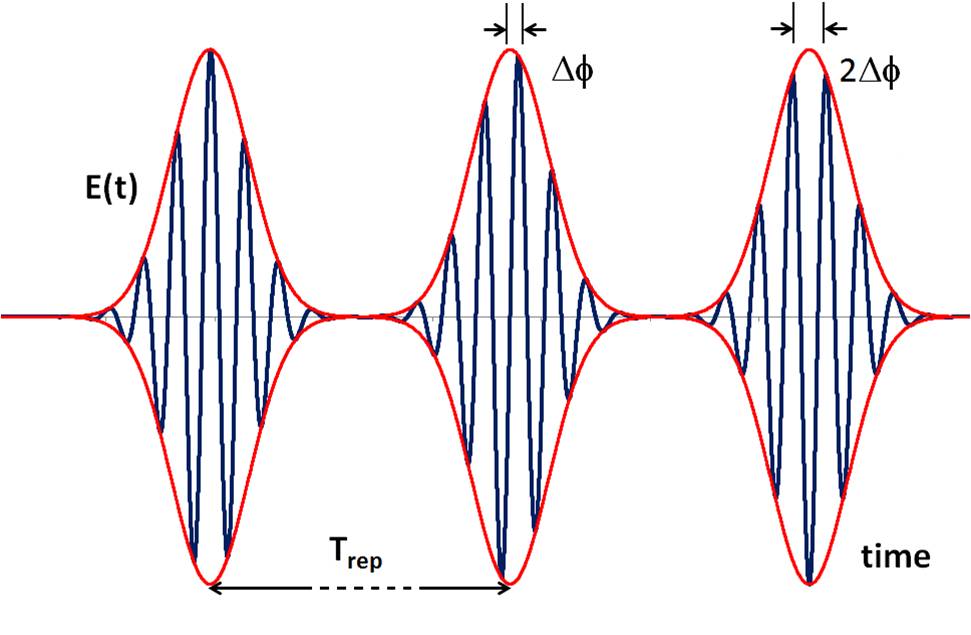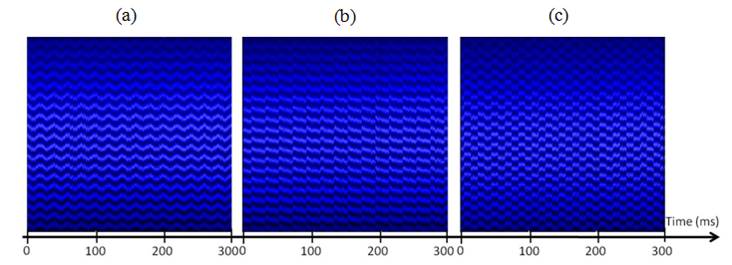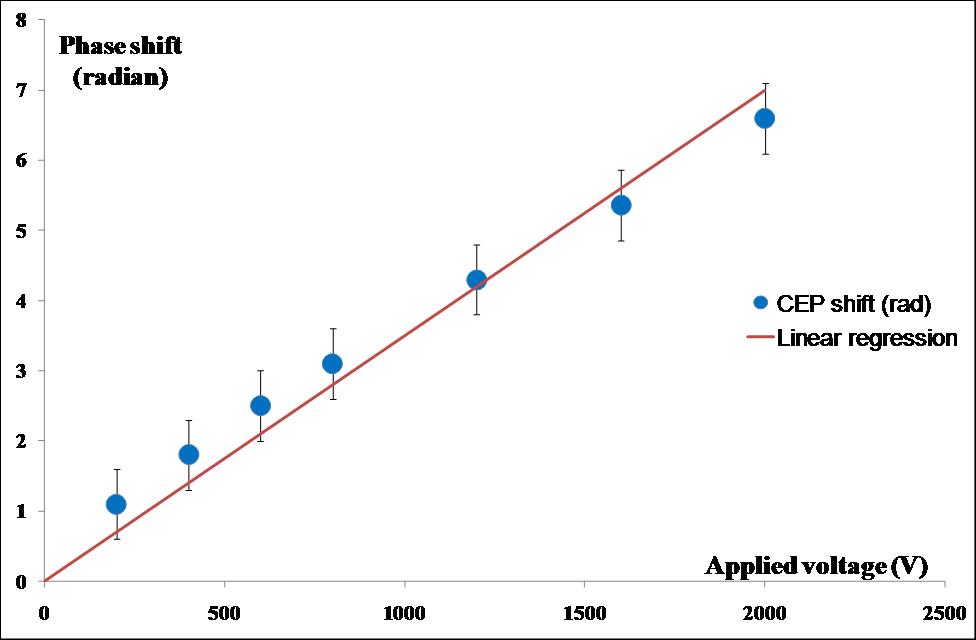One of the key research topic in the field of ultra-short laser pulses (femtosecond: 10-15 s) is the stabilization of the position of the carrier envelope (called CEP for “Carrier Envelope Phase”). An innovative device to control CEP fluctuations is offered by the CEA/SLIC (Saclay Laser-matter Interaction Centre) in collaboration with the Amplitude Technologies Company (AT). It is based on the use of the linear electro-optic (EO) effect, which allows the implementation of a simple, low-cost and compact corrective system with a response time that makes possible operation at high pulse repetition rates.

Ultra-short laser pulses are at the heart of a highly active area of research on radiation-matter interaction and have wide applications in various fields, for example from controlled nuclear fusion to the eye surgery.
Laser pulses shorter than a few tens of femto-seconds (10-15 s) contain only a few oscillations of the associated electric field within their carrier envelope defined by their temporal shape (see figure). The relative position of the carrier wave relative to its envelope, defines a phase (CEP), which can have a significant impact on how the pulse interacts with matter. Precise control of this phase is for example one key to the generation of single ultrashort pulses in the attosecond range (10-18 s).
The presence of perturbations related to the environment (temperature changes, vibration, etc…) in the amplification chain leads to slow variations in the CEP that must be corrected. Previously, the correction was done by mechanical displacements (change of optical path in a dispersive element), or via an acousto-optics dispersive filter that is complex and expensive.

SLIC and AT jointly propose a novel method for the correction system using the linear electro-optic (EO) effect in a LiNbO3 crystal [3]. [3].. Under the action of an electric field applied to the crystal, the phase (speed of the electric field oscillations) and group (speed of the envelope) velocities are independently changed, allowing CEP adjustment. The response of the corrective system can be optimized by maximizing the CEP variation with the applied field by a suitable choice of the geometry (polarization and propagation direction of the laser beam and crystal orientation). The response time of the EO effect allows operation at several kHz.
The demonstration of the efficiency of the shifter was carried out within IMPULSE, a joint laboratory of CEA Saclay and AT on an ultra-short pulse CPA laser system. The measurements (Fig. 1 and 2), in very good agreement with the predictions of calculation, led to a variation of the CEP of about 1 radian for an applied voltage of 300V to the selected crystal (4 cm long and 4 mm thick). This method has led to a CEA – AT IMPULSE patent and an ultrashort CEP stabilized laser prototype (with slow loop CEP stabilization) by means of the electro-optical method is under development.

Notes:
[1] Femtosecond pulse generation by a laser cavity is made by non-linear amplification. A higher amplification of the most intense part of the pulse has the effect of shortening the pulse. Under these conditions, the distinct modes of the laser cavity stabilize in phase and a “mode-locked” pulsed operation is obtained.
[2] The technique of chirped pulse amplification is to disperse the pulse frequency for time stretching, which allows amplification without damaging the optics. The pulse then undergoes inverse dispersion so that an amplified ultra-short pulse is obtained.
[3] The LiNbO3 crystal is chosen because of its high EO coefficient, its low cost and controlled crystal growth.References:
1. CEA-Amplitude Technologie patent (december 2010).
2. “Effects of carrier-envelope phase differences of few-optical-cycle light pulses in single-shot high-order-harmonic spectra”
M. Nisoli, G. Sansone, S. Stagira, and S. De Silvestri, C. Vozzi, M. Pascolini, L. Poletto, P. Villoresi, and G. Tondello, Phys. Rev. Lett. 91, 213905 (2003)
3. “Carrier-envelope phase control of femtosecond mode-locked lasers and direct optical frequency synthesis”
D. J. Jones, S. A. Diddams, J. K. Ranka, A. Stentz, R. S.Windeler, J. L. Hall, and S. T. Cundiff, , Science 288, 635-639 (2000).
Contacts: O. Gobert1*, M. Comte1, P.M Paul2, J.F Hergott1, O. Tcherbakoff1, F. Lepetit1, M. Perdrix1, D. Guillaumet1, G. Le Chevallier1, P. D’Oliveira1, F. Viala3
1CEA-Saclay, IRAMIS, Service des Photons, Atomes et Molécules, 91191 Gif-sur-Yvette, France
2Amplitude Technologies, 7 rue du Bois Chaland CE 2926 Lisses – 91029 Evry, France
3CEA-Saclay, DPC, Service de chimie physique, 91191 Gif-sur-Yvette, France.


